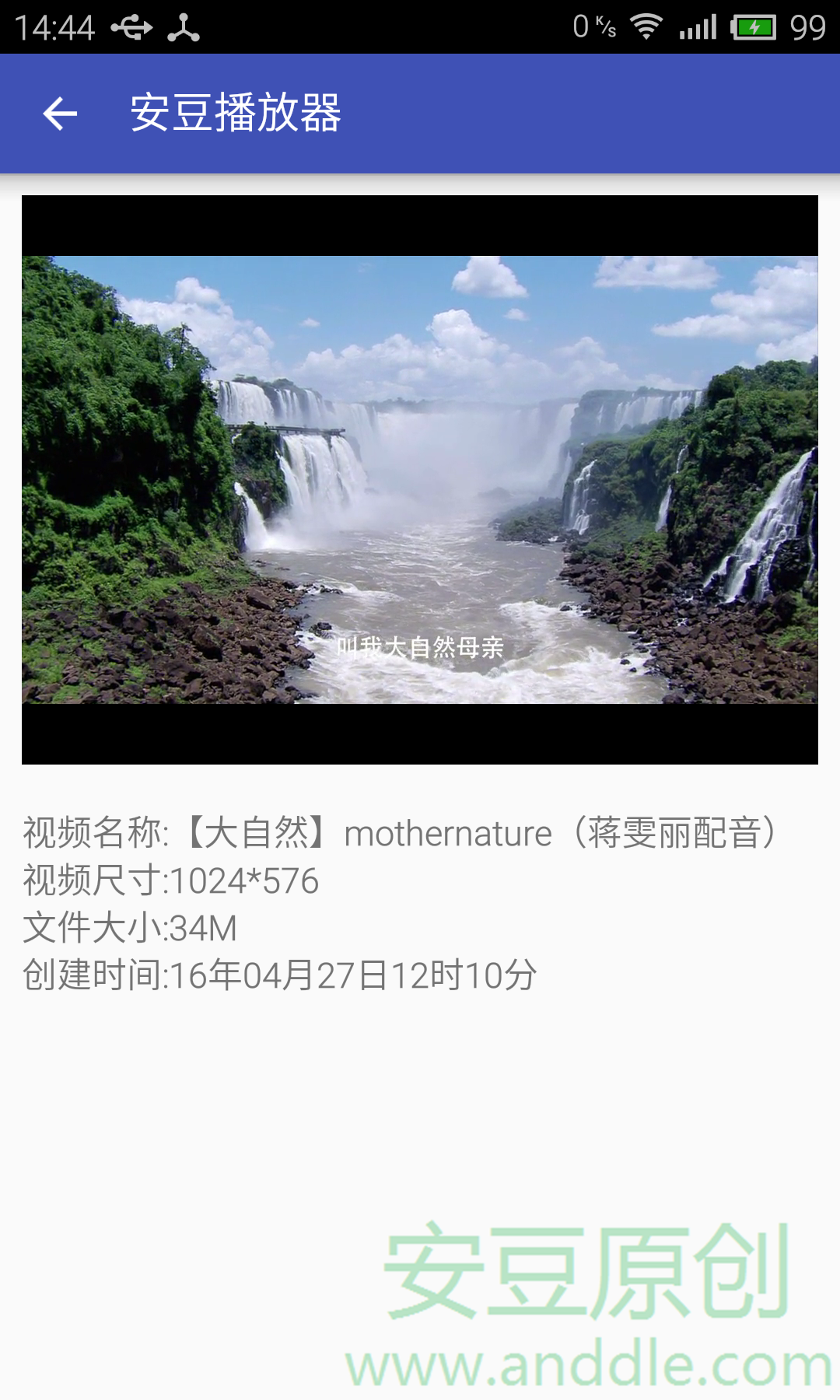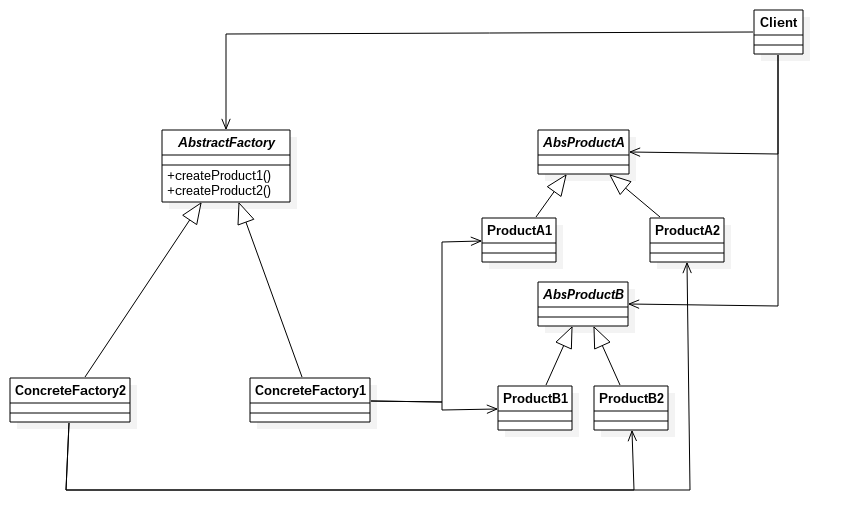編輯:關於Android編程
package cn.com.remoteServiceClient;
import com.cn.aidl.IRemoteQuery;
import android.app.Activity;
import android.content.ComponentName;
import android.content.Intent;
import android.content.ServiceConnection;
import android.os.Bundle;
import android.os.IBinder;
import android.view.View;
import android.view.View.OnClickListener;
import android.widget.Button;
import android.widget.TextView;
//客戶端步驟:
//1 自定義ServiceConnection類實現ServiceConnection接口
//即RemoteQueryServiceConnection implements ServiceConnection
//重寫其方法public void onServiceConnected(ComponentName name, IBinder service)
//主要目的就是接受服務端傳過來的Binder對象,即方法的參數IBinder service.
//但是因為存在AIDL協議的轉換,所以IBinder service是一個代理對象,我們要強轉,將其轉換為接口類型對象.代碼如下:
// public void onServiceConnected(ComponentName name, IBinder service) {
// remoteQueryBinder=IRemoteQuery.Stub.asInterface(service);//強轉!!
// }
//
//2 利用隱式意圖激活遠程服務
//
//3 利用remoteQueryBinder調用服務裡面的方法
//
//
//
//AIDL的客戶端的總結:
// (1) 采用的是隱式意圖去激活服務service,因為服務和客戶端不在同一個應用!
// 彼此看不見,所以是"隱"的,那麼就要采用隱式意圖去激活,所以在文件清單裡
// 聲明服務組件的時候,還要給其配置意圖過濾器!
// (2) 在onServiceConnected()方法裡接收服務端返回來的Binder對象時一定要注意!!!
// 這裡和本地服務的情況不一樣!!!因為存在AIDL協議的轉換,所以IBinder service是一個代理對象
// 我們要強轉將其轉換為接口類型對象remoteQueryBinder
// 即remoteQueryBinder=IRemoteQuery.Stub.asInterface(service);實現轉換
// (3) 核心總結:
// 現在把兩個例子都寫完了,再往回看,那麼可以發現其實本地服務和遠程服務
// 都在圍繞一個核心:得到一個Binder對象--->這個Binder對象有一個顯著的
// 特點:可以實現與服務的綁定,且可以完成一些業務
//
// 在本地服務裡面的實現是:Binder對象的類繼承自Binder且實現了業務的接口
// 那麼在接收此Binder對象的時候,當然可以用此接口來接收(父類引用指向子類對象嘛)
//
// 在遠程服務裡面實現是:我們要寫一個aidl文件.
// 然後由AIDL自動生成了一個很大的接口,在此接口中最核心是Stub類!它繼承自Binder而且
// 實現了我們定義的業務接口!所以返回來的Binder代理對象(注意是代理對象!)
// 既有"綁定"到服務的能力,也有完成業務方法的能力
//
// 所以在本地和遠程中我們都可以用業務接口來接受返回來的Binder對象或Binder代理對象
public class MainActivity extends Activity {
TextView numberTextView;
TextView resultTextView;
Button button;
RemoteQueryServiceConnection conn=new RemoteQueryServiceConnection();
IRemoteQuery remoteQueryBinder;
public void onCreate(Bundle savedInstanceState) {
super.onCreate(savedInstanceState);
setContentView(R.layout.main);
numberTextView=(TextView) findViewById(R.id.number);
resultTextView=(TextView) findViewById(R.id.result);
button=(Button) findViewById(R.id.button);
button.setOnClickListener(new ButtonOnClickListener());
Intent service=new Intent();
service.setAction("com.cn.remoteService.RemoteQueryService");
bindService(service, conn, this.BIND_AUTO_CREATE);//綁定服務
}
private class ButtonOnClickListener implements OnClickListener{
public void onClick(View v) {
String number=numberTextView.getText().toString();
String result;
try {
result = remoteQueryBinder.queryByNum(Integer.valueOf(number));
resultTextView.setText(result);
} catch (Exception e) {
e.printStackTrace();
}
}
}
//接收綁定的服務和解除服務
private final class RemoteQueryServiceConnection implements ServiceConnection{
public void onServiceConnected(ComponentName name, IBinder service) {
remoteQueryBinder=IRemoteQuery.Stub.asInterface(service);
}
public void onServiceDisconnected(ComponentName name) {
remoteQueryBinder=null;
}
}
protected void onDestroy() {
unbindService(conn);
super.onDestroy();
}
}
<?xml version="1.0" encoding="utf-8"?>
<LinearLayout xmlns:android="http://schemas.android.com/apk/res/android"
android:orientation="vertical"
android:layout_width="fill_parent"
android:layout_height="fill_parent"
>
<TextView
android:layout_width="fill_parent"
android:layout_height="wrap_content"
android:text="@string/number"
/>
<EditText
android:layout_width="fill_parent"
android:layout_height="wrap_content"
android:id="@+id/number"
/>
<Button
android:layout_width="wrap_content"
android:layout_height="wrap_content"
android:text="@string/button"
android:id="@+id/button"
/>
<TextView
android:layout_width="fill_parent"
android:layout_height="wrap_content"
android:id="@+id/result"
/>
</LinearLayout>
package com.cn.remoteService;
import com.cn.aidl.IRemoteQuery;
import android.app.Service;
import android.content.Intent;
import android.os.IBinder;
import android.os.RemoteException;
//服務端步驟:
//1 生成aidl文件
//建立一個接口,裡面可以有各種方法.
//將此接口稍作修改,讓"接口名"和"方法名"都沒有修飾(如public)!!代碼如下:
//interface IRemoteQuery {
// String queryByNum(int number);
//}
// 然後找到這個被修改後接口的文件路徑,按照此路徑在硬盤上將其後綴改為.aidl
//這樣就生成了aidl文件.在此過程中注意:接口名和aidl文件名必須相同.
//2 刷新工程,系統會自動生成用於用於遠程通信的IRemoteQuery.java
// 分析此IRemoteQuery.java
//(1)IRemoteQuery.java內部實際是一個名叫IRemoteQuery的接口
//(2)該IRemoteQuery接口內部最重要的是一個Stub類(即IRemoteQuery.Stub),此類繼承自Binder類且實現了IRemoteQuery業務接口
// 所以該類的對象具有遠程訪問的能力
//
//3在客戶端建立一個包,包的名稱與aidl文件所在的包名一致!然後將服務端的aidl文件拷貝到此包下,然後刷新
//發現在客戶端的gen下生成了IRemoteQuery.java
//
//4 自定義遠程服務類(RemoteQueryService),其繼承自service
//
//5 在RemoteQueryService裡面寫一個內部類RemoteQueryBinder繼承自IRemoteQuery.Stub
//即RemoteQueryBinder extends IRemoteQuery.Stub
//6 重寫服務的public IBinder onBind(Intent intent)方法,返回一個Binder對象即RemoteQueryBinder類對象給客戶端
//
//
//關於AIDL的服務端的總結:
//(1) 自動生成的Stub是核心重點,從生成的代碼可以看出:它繼承自Binder而且實現了我們定義的業務接口
// 所以它既可以有綁定的能力也有調用業務的能力(這點和剛才寫的調用本地服務的例子有異曲同工之妙)
//(2) AIDL的定義和接口很類似,但是"接口名"和"方法名"都沒有修飾!!!!比如public
//(3) 在客戶端和服務端都要此包!!因為這相當於一個通信協議!!!雙方都必須遵守,所以一式兩份!!!
public class RemoteQueryService extends Service {
@Override
public IBinder onBind(Intent intent) {
return remoteQueryBinder;
}
RemoteQueryBinder remoteQueryBinder=new RemoteQueryBinder();
private String [] names=new String [] {"小明","小王","小楊","小李"};
private final class RemoteQueryBinder extends IRemoteQuery.Stub{
@Override
public String queryByNum(int number) throws RemoteException {
return query(number);
}
}
public String query(int i){
if(i>0&&i<5){
return names[i-1];
}
return "查詢錯誤,請再次輸入";
}
}
/*
* This file is auto-generated. DO NOT MODIFY.
* Original file: D:\\workspace\\queryByRemoteService\\src\\com\\cn\\aidl\\IRemoteQuery.aidl
*/
package com.cn.aidl;
/**
*注意:
*此AIDL的定義和接口很類似,但是"接口名"和"方法名"都沒有修飾!!!!比如public
*/
public interface IRemoteQuery extends android.os.IInterface
{
/** Local-side IPC implementation stub class. */
public static abstract class Stub extends android.os.Binder implements com.cn.aidl.IRemoteQuery
{
private static final java.lang.String DESCRIPTOR = "com.cn.aidl.IRemoteQuery";
/** Construct the stub at attach it to the interface. */
public Stub()
{
this.attachInterface(this, DESCRIPTOR);
}
/**
* Cast an IBinder object into an com.cn.aidl.IRemoteQuery interface,
* generating a proxy if needed.
*/
public static com.cn.aidl.IRemoteQuery asInterface(android.os.IBinder obj)
{
if ((obj==null)) {
return null;
}
android.os.IInterface iin = obj.queryLocalInterface(DESCRIPTOR);
if (((iin!=null)&&(iin instanceof com.cn.aidl.IRemoteQuery))) {
return ((com.cn.aidl.IRemoteQuery)iin);
}
return new com.cn.aidl.IRemoteQuery.Stub.Proxy(obj);
}
@Override public android.os.IBinder asBinder()
{
return this;
}
@Override public boolean onTransact(int code, android.os.Parcel data, android.os.Parcel reply, int flags) throws android.os.RemoteException
{
switch (code)
{
case INTERFACE_TRANSACTION:
{
reply.writeString(DESCRIPTOR);
return true;
}
case TRANSACTION_queryByNum:
{
data.enforceInterface(DESCRIPTOR);
int _arg0;
_arg0 = data.readInt();
java.lang.String _result = this.queryByNum(_arg0);
reply.writeNoException();
reply.writeString(_result);
return true;
}
}
return super.onTransact(code, data, reply, flags);
}
private static class Proxy implements com.cn.aidl.IRemoteQuery
{
private android.os.IBinder mRemote;
Proxy(android.os.IBinder remote)
{
mRemote = remote;
}
@Override public android.os.IBinder asBinder()
{
return mRemote;
}
public java.lang.String getInterfaceDescriptor()
{
return DESCRIPTOR;
}
@Override public java.lang.String queryByNum(int number) throws android.os.RemoteException
{
android.os.Parcel _data = android.os.Parcel.obtain();
android.os.Parcel _reply = android.os.Parcel.obtain();
java.lang.String _result;
try {
_data.writeInterfaceToken(DESCRIPTOR);
_data.writeInt(number);
mRemote.transact(Stub.TRANSACTION_queryByNum, _data, _reply, 0);
_reply.readException();
_result = _reply.readString();
}
finally {
_reply.recycle();
_data.recycle();
}
return _result;
}
}
static final int TRANSACTION_queryByNum = (android.os.IBinder.FIRST_CALL_TRANSACTION + 0);
}
public java.lang.String queryByNum(int number) throws android.os.RemoteException;
}
 手把手教你做視頻播放器(五)
手把手教你做視頻播放器(五)
第7節 豎屏的播放界面播放視頻的功能放在一個單獨的Activity當中。我們將為它們設置橫豎屏兩種布局。在豎屏的時候,上半部分播放視頻,下半部分顯示視頻信息;
 Android源碼中的抽象工廠---IPolicy
Android源碼中的抽象工廠---IPolicy
抽象工廠應用是很廣的,在Android源碼中,這個IPolicy就是一個簡單的抽象工廠模式。下面分析一下IPolicy及其實現,以及創建的相關對象(源碼基於5.0.0)。
 Android - 通過Intent啟動Activity
Android - 通過Intent啟動Activity
通過Intent啟動Activity 為了動態關聯Activity界面,使用Intent啟動,可以靈活綁定。 在Intent靜態
 我的Android進階之旅------)Android實現音樂示波器、均衡器、重低音和音場功能
我的Android進階之旅------)Android實現音樂示波器、均衡器、重低音和音場功能
本實例來自於《瘋狂Android講義》,要實現具體的功能,需要了解以下API: MediaPlayer 媒體播放器Visualizer 頻譜Equalizer 均衡器Ba